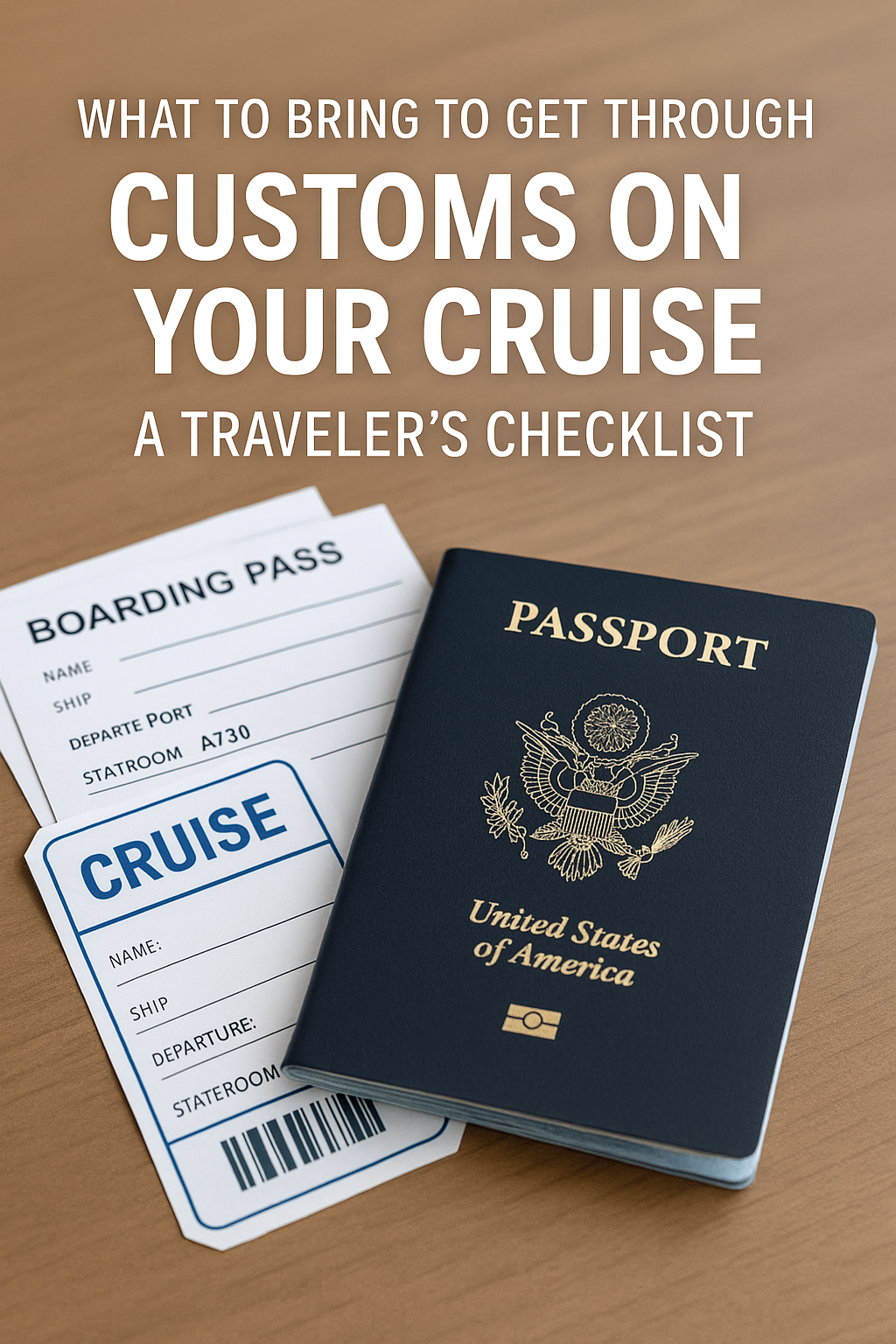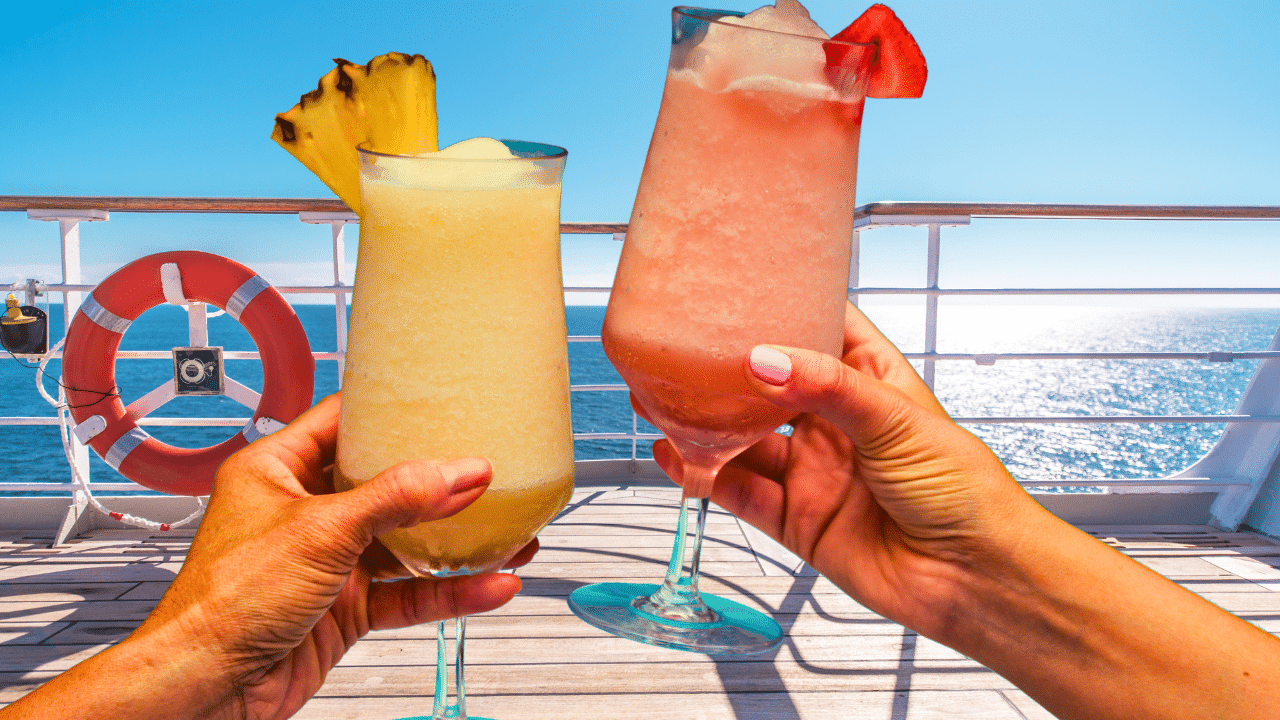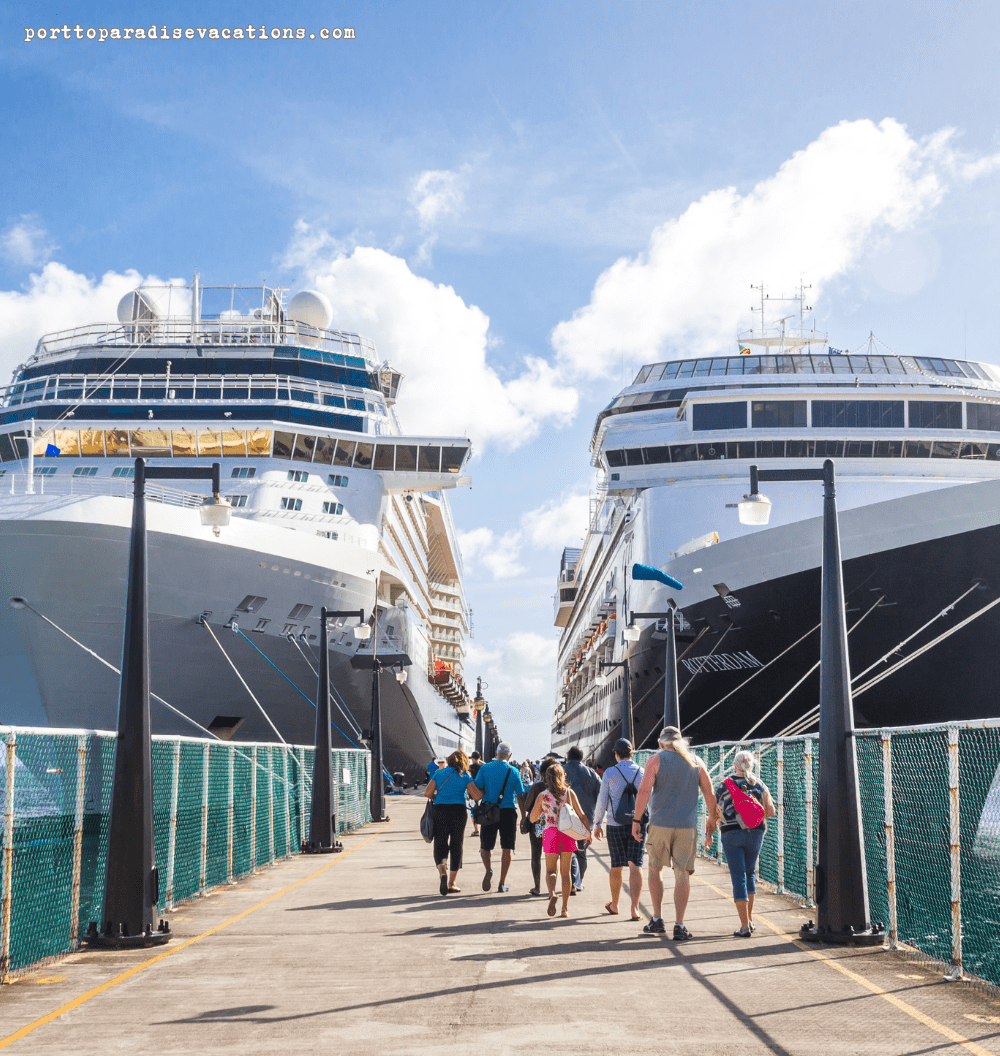If you’ve ever watched other passengers breeze through customs while you’re still fumbling for your passport, you know how stressful embarkation day can be. The good news? With a little preparation and the right documents, clearing customs on your cruise can be quick, easy, and drama-free.
Whether you’re heading for a Caribbean getaway, an Alaskan adventure, or a European river cruise, here’s everything you need to bring to get through customs with confidence.
Valid Passport (or Approved Travel Documents)
The most important item you’ll need is your passport. It’s your golden ticket to boarding and disembarking smoothly at every port.
- For most cruises, a valid passport book is required, not just a card.
- Check that it’s valid for at least six months beyond your travel dates.
- U.S. citizens sailing on “closed-loop cruises” (departing and returning to the same U.S. port) may use a government-issued photo ID and a certified birth certificate, but a passport is always the safer bet.
Tip: Keep your passport in a waterproof holder or lanyard during embarkation to protect it and make it easy to access.
Cruise Documents and Boarding Pass
Before you even arrive at the port, you’ll need to complete your online check-in through the cruise line’s website. Once completed, print or download your:
- Cruise boarding pass
- Luggage tags (if provided)
- Port arrival appointment confirmation
Tip: Keep printed copies handy. Customs agents and cruise staff often prefer paper over digital at busy terminals.
Proof of Travel Insurance
Many cruise lines now require proof of travel insurance, especially for international voyages. Even when not mandatory, it’s one of the smartest documents you can bring.
- Print your insurance policy summary and include the emergency contact number for your provider.
- Some countries (like those in the EU) may ask for proof of coverage for medical emergencies or repatriation at customs.
Health and Vaccination Documents (If Applicable)
Post-pandemic travel has made it common for ports and cruise lines to ask for health declarations or vaccination proof, particularly for certain destinations.
- Keep vaccination cards or digital health certificates ready if required.
- If you’re visiting regions with specific vaccine requirements (like yellow fever zones), carry your International Certificate of Vaccination.
Tip: Store all health and travel paperwork together in a single document pouch so you can quickly show whatever is needed.
Cash and Credit Cards for Customs Fees or Port Entry
Some destinations require small entry or departure fees, typically payable in cash. Others may ask for a credit card hold during immigration processing.
- Bring a small amount of local currency for these situations.
- Have a backup credit card separate from your main one just in case of loss or fraud while traveling.
Prescription Medications in Original Containers
Customs officials may inspect any medications you bring on board. To avoid issues:
- Keep prescriptions in original labeled bottles or packaging.
- Bring a copy of your prescription or a note from your doctor if it’s a controlled substance.
- Pack medications in your carry-on luggage, not checked bags.
Prohibited Items List (What Not to Bring)
Each cruise line and port authority has strict rules about what can’t be brought aboard. Commonly prohibited items include:
- Weapons or sharp objects
- Irons, hot plates, or other heating devices
- Liquor (check each cruise line’s alcohol policy)
- Drones in some international ports
Before you pack: Check your cruise line’s prohibited items list otherwise customs may confiscate anything questionable at check-in.
If you have any questions about if an item is prohibited on your voyage, contact your travel team and we can help you find that answer.
Customs Declaration Form
When returning to your home country, you’ll complete a customs declaration form listing any souvenirs, alcohol, or duty-free goods purchased abroad.
- Keep receipts for any big purchases to simplify the process.
- Know your duty-free limits (for U.S. travelers, typically $800 worth of goods per person).
If you’re unsure about declaring something, declare it anyway. Honesty saves time and potential fines.
Digital Copies and Backup Storage
Technology can save your trip. Before leaving home, take a few extra steps:
- Scan or photograph all your documents (passport, ID, insurance, itinerary) and email them to yourself.
- Save backups to a secure cloud service like Google Drive or Dropbox.
- Bring a USB drive with encrypted copies just in case you lose internet access abroad.
A Travel Folder or Organizer
Finally, keep everything together. A simple travel organizer can make customs a breeze.
Use labeled sections for:
- Identification
- Travel insurance
- Health documents
- Cruise tickets
- Receipts and customs forms
Having everything in one place saves time, reduces stress, and helps you look like a seasoned traveler. A done for you travel binder is available for extra costs from your travel team.
Smooth Sailing Starts with Smart Preparation
Customs may sound intimidating, but it doesn’t have to be. By organizing your documents, packing carefully, and double-checking requirements before departure, you’ll glide through check-in and reentry like a pro.
When you’re ready to plan your next cruise, let our travel team take care of every detail — from documentation to destinations.
Contact us for a free consultation or fill out a no-obligation form today to start planning your dream cruise.






